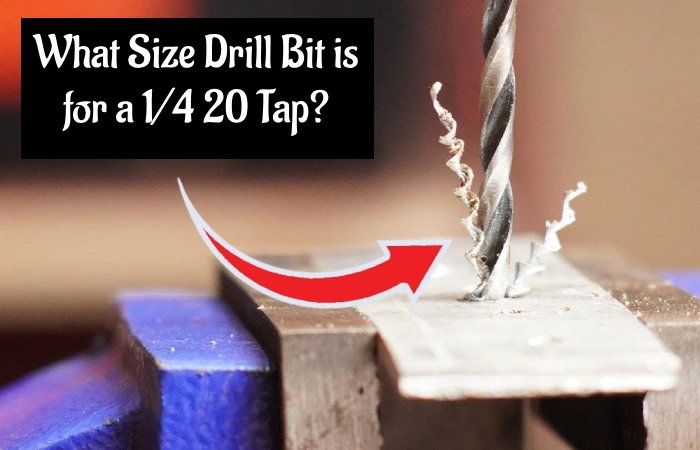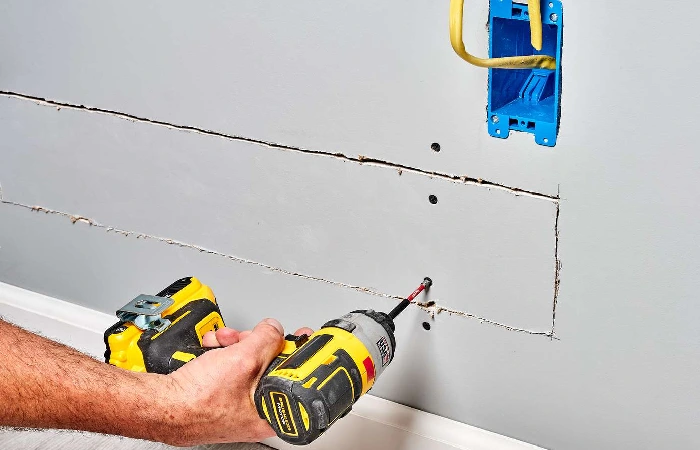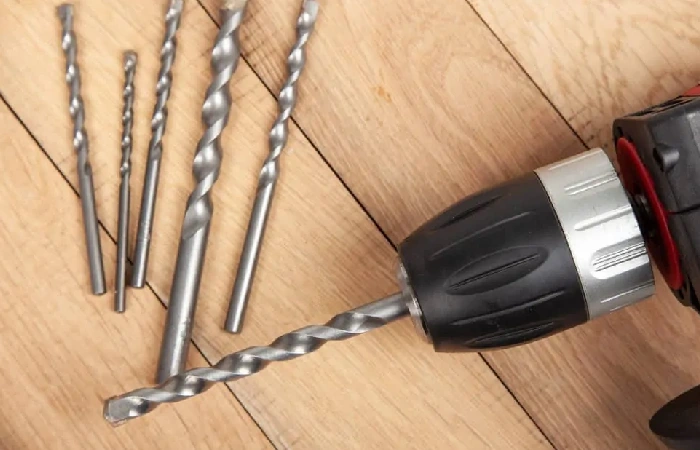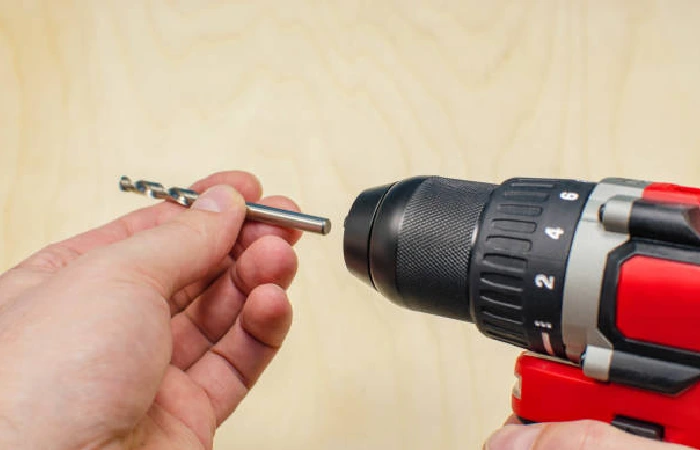Table of Contents
Introduction
What Size Drill Bit for a 1/4 20 Tap – You need to drill a hole in something but don’t have the right size drill bit. So you try to brand do with what you consume and end up unfulfilled and with a sharp, poorly drilled hole. If only you had recognized the 1/4 20-tap drill size. This little-known boring hack can save you from hours of frustration, and it’s so humble that anyone can do it. In this article, we’ll teach you all you need to distinguish about the 1/4 20 tap drill size, counting what it is, and how to use it. Keep interpretation for all the details.
What size drill bit is for a 1/4 20 tap?

The 1/4-20 tap drill scope is the most significant shared size for taps and is used to create threads in various materials, from plastic to steel. This size tap is rummage-sale for a variety of applications, including creating threads for clasps such as bars and screws. The 1/4-20 tap tool size is also standard in plumbing applications. Taps and dies are tools that are rummaged to create or repair threads.
The tap drill is typically 75 percent for old-style or softer materials. Still, it can be lowered to 50 percent for more rigid materials requiring a tighter connection with the bolt or screw. When tapping more rigid materials, 50 percent finer threading may be favored. This may influence the size of your drill bit; for a 50 percent blow drill for 1/4′′ 20 blows, use a 7/32′′ drill bit.
Specifications
Material: High Carbon Steel
Number of Pieces: 2.0
Pack Quantity: 2
Piece Count: 2.0
Type: Fractional
Includes: (1) 1/4 – 20 High-Carbon Steel Plug Tap, (1) #7 Wire Gauge Drill Bit.
How to Drill for Tapping?
When you decide which size drill bit to use, you must move on to the drilling process. When drilling into metal, you will want to mount that material with at least two clamps to reduce the chance of the metal spinning and possibly injuring you. Wear safety goggles and consider thick gloves as well.
You will first need to mark the area to drill. Use masking or painter’s tape to leave an excellent area to mark and help keep the step drill bit in one place. Using a center punch with a hammer will also help by leaving a divot for the bit to rest in. If drilling into a thin or flexible material, be sure it has solid backing so you do not deform it.
Ensure your drill is completely perpendicular at 90 degrees to the material you are drilling. Any angle created may create problems with both tapping and screwing in bolts. Use a drill press or guide for your handheld drill if possible. Use cutting fluid and regularly sharpen your drill bits; do your best to keep the drill bit from getting too hot.
How Does A Drill Bit Work?

As mentioned, drill bits for metals are vital for DIY fans and specialists. The drill’s chuck typically holds drill bits in place. When you turn on the drill, the chuck alternates, providing torque and the axial speed needed to drill the hole.
In addition, it firmly holds the drill bits, efficiently custody them in place until you remove them. On the other hand, the best counterbore drill bits have one end with a stem that fits hooked on a drill chuck and the other with cutting edges.
Here are the mechanisms of a standard drill bit:
The Point Angle: The angle shaped at the wounding point of the bit. Drill bits with variable tip angles are ideal for various types of materials.
The Lip Angle: The angle usually controls how much help the wounding edge of drill bits obtains.
The Spiral: The degree at which the drill bit rotates controls the chip removal rate.
The Mechanic: A term dealers use to describe the length of drill bits.
How Do You Use The 1/4 20 Tap Drill Size?
If you want to tap a hole 1/4 inch in width and 20 threads per inch, you’ll need a 1/4 20-tap drill size. This is the size of the tool bit you’ll need to use to create the correct-sized hole for your tap. When using a 1/4 20-tap drill size, following the correct steps to ensure a proper fit is significant.
First, you must select the right drill bit for the job. You can discover these at most hardware stores or online retailers. Next, you’ll need to ascribe the drill bit to your drill. Be unquestionable that the drill is set to the correct speed before beginning. If you’re unsure, it’s always better to err on caution and go too sluggish rather than too fast.
Once the drill is set up, you can start boring your hole. Start slowly and upsurge the speed as you go. Keep the drill bit perpendicular to the surface to safeguard a conventional hole. After you’ve bored the hole, it’s time to start patter. Over, be sure to go slowly and increase the speed as you get comfortable. It’s essential to keep the tap perpendicular to the surface as well.
Other Considerations for Drilling 1/4″ 20 Tap

When you drill any material for tapping, decide beforehand whether to tap with 50% or 75%. This may change depending on the hardness of the material, so if you can drill a finished scrap piece first, that may give you a better idea of how you should tap.
UNC 1/4 x 20) – 5.1mm Tapping Drill
Our products are made to the highest standards and from HSS steel. Stocked in our Bristol warehouse and ready for dispatch to the world, we can send your order the same day, no matter how big or small! Check our customer testimonials page to see how we’ve been helping enthusiasts and professionals worldwide and exceeding expectations.
Our products are made to the highest standards and from HSS steel. Stocked in our Bristol warehouse and ready for dispatch to the world, we can send your order the same day, no matter how big or small! Check our customer testimonials page to see how we’ve been helping enthusiasts and professionals worldwide and exceeding expectations.
AP and Drill Bit Size and Reference Charts
This technologies reference document provides info on the suitable tap and drill bit sizes for creating threaded holes in various resources such as Stainless Steel, Steel, Iron, Brass, Aluminum, and Plastics.
Taps are wounding tools used to create screw gossamers inside a hole, while drill bits are used to create the initial hole before the pattern. This chart provides leadership on the correct tap and drill bit sizes to use for dissimilar thread sizes, safeguarding that the gauzes are of the precise size and pitch and that they will fit the envisioned screw or bolt.
The tap and drill bit diagram lists the following parameters: Number of Threads Per Inch (TPI), Major Diameter, Minor Diameter, Tap Drill size, Permission Drill size, Decimal Counterparts for Tap drills, Decimal Counterparts for Permission Drills, Close Fit size, Free Fit size, and the fraction of thread engagement. The pitch width is the width at which the width of the yarn and the width of the groove between threads are equal. The fraction of thread appointment is the fraction of the length of the screw that will engage in the negotiated hole.
How To Computer The Tap Drill Size For 1/4″?

There is a diversity of 1/4″ taps that need dissimilar drill bits. You can use slightly one of four drill bits for 1/4″ taps, contingent on the gossamers per inch and the size of the blow drill you’re using.
When choosing a drill bit aimed at a 1/4″ tap, you must reflect the desired number of threads per inch and whether you’ll be boring firmer or softer resources. When altering the thread count or moving between soft and materials, factors like overall extensiveness affect the alteration of drill bit sizes. It’s not quite a linear [1] development.
Because no two alterations are the same, there’s no way to predict the size based on a mathematical formula. Instead, use tap drill size charts like this to learn the drill bit sizes for each tap size. If so you’re not relying on memory alone.
Drill Bit Size for a 1/4 28 Tap
1/2-13 Tap Drill Bit Size
3/8-16 Tap Drill Bit Size.
Conclusion
The coarseness of the threads you’ll be patter based on the hardness of the physical. If you’ll be drilling will determine the drill bit size for a 1/4′′ 20 tap. Make a decision beforehand, and if possible, test with scrap physical to ensure you have the right tools. The most common way to produce an internal female thread is to drill a hole smaller than the primary diameter and then use a tap to produce the thread.
